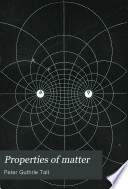 | Park Benjamin - 1878 - 994 pages
...mean the smallest conceivable portion of a body. 2. Change of motion is proportional to the acting force, and takes place in the direction in which the force acts. The term motion here includes all the elements of the body which enter into the motion, and hence involves... | |
 | Joseph Anthony Gillet, William James Rolfe - 1881 - 342 pages
...the body. 28. Newton's Second Law of Motion. — Change of motion is proportional to the impressed force, and takes place in the direction in which the force acts. This is Newton's second law of motion. By impressed force Newton means what is now called impulse,... | |
 | Joseph Anthony Gillet, William James Rolfe - 1881 - 544 pages
...the body. 29. Newtori 's Second Law of Motion. — Change of motion is proportional to the impressed force, and takes place in the direction in which the force acts. This is Newton's second law of motion. By motion, as here used, Newton means what is now called momentum,... | |
 | William Henry H. Hudson - 1884 - 70 pages
...rest, or of uniform motion in a straight line, except in so far as it is compelled by external forces to change that state. 2. Change of motion is proportional to the impressed force, and takes place in the straight line in which that force is impressed. 3. Action and... | |
 | Peter Guthrie Tait - 1885 - 344 pages
...Dynamics. 120. Newton's SECOND LAW OP MOTION is as follows : — Change of momentum is proportional to force, and takes place in the direction in which the force acts. When a body (however massive) is free, every force (however small) produces its proper change of momentum.... | |
 | Edward Salisbury Dana - 1881 - 320 pages
...or of uniform motion in a straight line, except in so far as it may be compelled by impressed forces to change that state. (2) Change of motion is proportional to the impressed force, and takes place in the direction of the straight line in which the force acts. (3)... | |
 | Edward John Routh - 1891 - 428 pages
...state of rest or of uniform motion in a straight line, except in so far as it may be compelled by force to change that state. 2. Change of motion is proportional to the force applied and takes place in the direction of the straight line in which the force acts. 3. To... | |
 | A. L. Selby - 1893 - 324 pages
...have a good method of measuring time. § 3. Law II. Change of Motion is proportional to the impressed force, and takes place in the direction in which the force acts. Consider the force exerted on a given particle during a given time T. The change of motion then consists... | |
 | Richard Glazebrook - 1893 - 208 pages
...at the following1 statement. Law II. — Rate of change of momentum is proportional to the impressed force, and takes place in the direction in which the force acts. If we proceed as above, we may look upon this second law as a dynamical definition and measure of force.... | |
 | Peter Guthrie Tait - 1894 - 388 pages
...Dynamics. 120. Newton's SECOND LAW OF MOTION is as follows: — Change of momentum is proportional to force, and takes place in the direction in which the force acts. Thus, according to Newton, a force always produces change of momentum. Hence there is no balancing... | |
| |